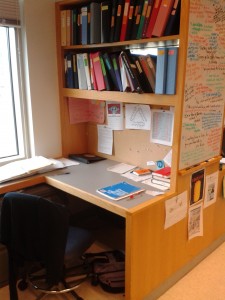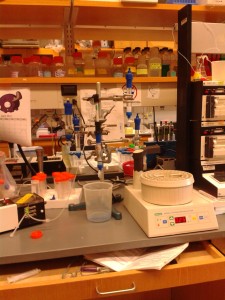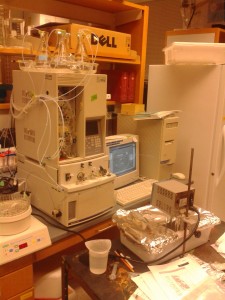A Day in the Life: Stubbs Lab
I’ve blogged in the past about my undergraduate research in a structural biology lab at Vanderbilt and how this summer I’m working full-time as a part of a summer research program called VUSRP, but I’ve never really gotten into the nitty gritty of what I do in lab. Welcome to a day in the life working in the Stubbs Lab.

My research this summer is focused on the expression and purification of beta amyloid 1-40. But what on earth does that mean? Amyloids are misfolded proteins that are associated with neurodegenerative disorders; and the one I am working with is associated with Alzheimer’s Disease. I am essentially growing the protein in cells and then purifying away the cell debris and other junk in order to get a sample of as pure protein as possible. From there, I’ll be able to do structural studies and computer modeling to try and determine its structure. That’s the gist of it, but here’s what I’m actually doing…
~July 11, 2012~
Today is one of those LOOONNNGGG lab days. I actually did not come in until the late afternoon because one of the staff members of the lab first prepared some samples we’d been making for me. She wanted a normal work day, so she’s doing the preparation in the morning and early afternoon and then I came in to do the purification steps in the late afternoon and evening.
Step 1: Prepare cell pellet to put through a nickel column in order to get rid of cell debris and junk.

Step 2: Check the absorbancies of all collected fractions and use only the most concentrated samples for the next step.
Step 3: Run the chosen samples through a HPLC column and collect samples.

Step 4: Check the absorbancies of all collected fractions and put together the samples that contain protein.
Step 5: Freeze this sample in liquid nitrogen and then hook it up to a lyophilizer for the night.
Alright, well…I’m done for the day now! Tomorrow, I will come in and see how much lyophilized protein I have and I will also do the same procedure again with a new batch.